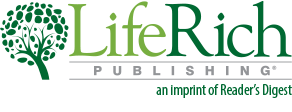CSML-004: The Alphabet Language Skill
Teaching and Learning Letters
Introduction
Welcome to the world of the alphabet, a rich, easy-to-understand set of rules that kick off the Reading Champs instructional handbooks. These simple, Easy-Start reading success secrets make a big difference in your teaching and coaching!
Before we start with the alphabet, you need to know a few things. First, each letter represents one or more sounds, and second, all printed and written words have meaning.
All English text is made up of letters and combinations of letters called words; each word is separated from every other word by one or more spaces and, in some cases, symbols known as punctuation.
The next fact is that English is read from left to right and from the upper-left corner of the text to the bottom-right corner.
And, finally, the letters of the alphabet are presented in UPPERCASE LETTERS and lowercase letters. It is important that English-language learners are aware of these differences and the rules that govern their use.
Why Do We Need to Know This?
Few elements of the English language are as important as our alphabet. Using only twenty-six symbols, we can construct tens of thousands of different words. We describe those words later in these instructional handbooks, but before we do, you need to understand what these symbols are and how they are used to represent sounds.
We believe the English alphabet is the most important of all the elements that define our language. Here’s what you need to know to jumpstart your teaching.
Instructional Activities
Introduction to the Alphabet
Just like people, some letters are short, and some are tall; some are sort of thin, some are medium sized, and some are wide. Some letters have tails, and some have lines moving through them. Some letters are doubled up in words, and others never stand together. But they are all symbols for sounds, and those sounds make syllables, words, and sentences.
How to Recognize Letters in the Alphabet
There are four lowercase letters with tails: y, p, q, and j.
There are four lowercase letters with sticks: p, b, l, and m.
There are four lowercase letters with circles: o, a, d, and p.
There are three lowercase letters with tunnels: h, m, and n.
There are three tall lowercase letters: f, h, and l.
There are four short lowercase letters: a, c, n, and u. (or c u a n) if you really want to remember them that way).
There are three lowercase letters with crossing lines: f, t, and x.
There are two lowercase letters with dots: i and j.
There are four curving lowercase letters: m, n, e, and f.
There are two slanting lowercase letters: x and y.
And there are three letters whose lowercase and uppercase look about the same:
Ss, Xx, and Yy.
All the uppercase letters are about the same size:
A, B, C, D, E, F, G, H, I, J, K, L, M,
N, O, P, Q, R, S, T, U, V, W, X, Y, and Z.
All the lowercase letters are different sizes and shapes:
a, b, c, d, e, f, g, h, i, j, k, l, m,
n, o, p, q, r, s, t, u, v, w, x, y, and z.
What are the letters in your first name? You may print them in all uppercase letters.
The Word Wall Card (see next page) is designed so students can rearrange them easily into small packets to demonstrate an understanding of the concepts described above.
Example: This word wall card layout is intended for a 4” x 6” index card. Letters are presented in both uppercase and lowercase letters and in Times New Roman (a serif face) and Arial (a sans-serif face). Four words are provided so the student can find, cut, and paste illustrations of each of the example words. Complete sets as .pdf files are available at ritawirtz.com. Feel free to use this idea to create your own set.





